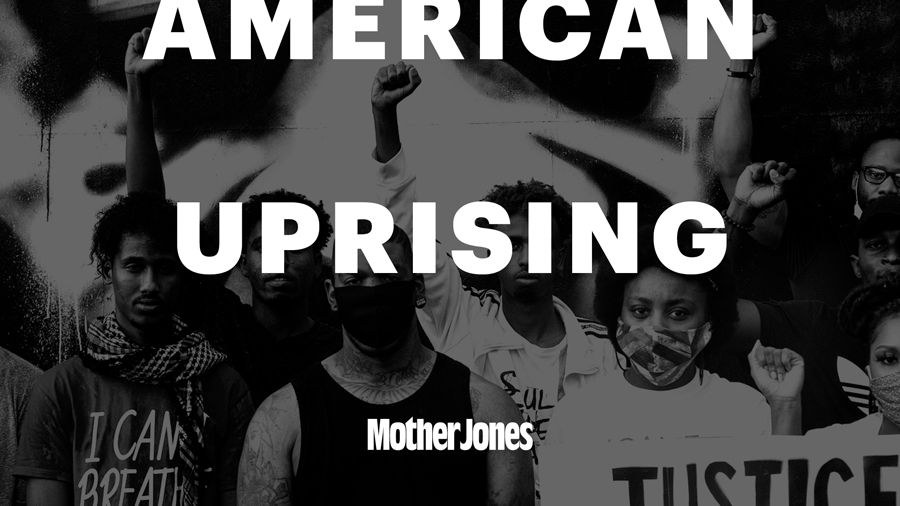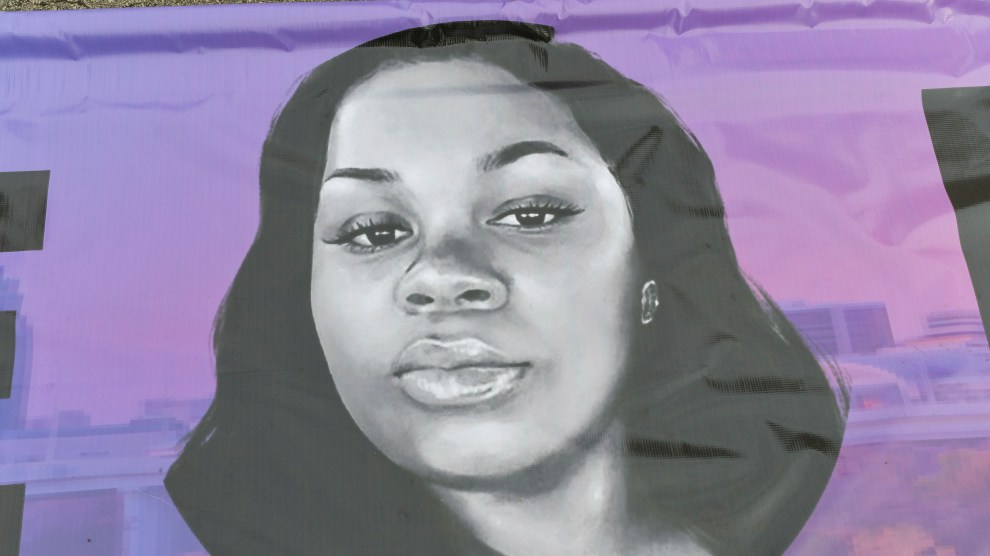
The exterior of San Quentin State PrisonManny Crisostomo/Zuma
This story was originally published by ProPublica.
A decade ago, so many inmates were crammed into California’s prisons that the sprawling system had reached a breaking point. Prisoners were sleeping in gyms, hallways, and dayrooms. Mentally ill prisoners were jammed into tiny holding cells. There were dozens of riots and hundreds of attacks on guards every year. Suicide rates were 80 percent higher than in the rest of the nation’s prisons.
The California prison population peaked at more than 165,000 in 2006—in a system designed to house just 85,000. That dubious mountaintop came after years of tougher and tougher laws like mandatory sentences, juveniles prosecuted as adults and a three-strikes initiative overwhelmingly approved by voters in 1994.
Since then, California has struggled to deal with a cascading series of problems and almost constant oversight by federal judges. In recent years, the state has undergone the biggest transformation to its prisons since the first, San Quentin, opened in 1851.
Here are some takeaways from the epic journey:
Arnold’s Lift
Long before he ran for office, Arnold Schwarzenegger had an interest in prisons and inmate rehabilitation. He felt bodybuilding and fitness could help inmates focus and build character. In a scene from Pumping Iron, the 1977 documentary that catapulted Schwarzenegger onto the international stage, you can see him showing off his muscles to federal prisoners at the Terminal Island, California, lockup:
It was something of a coincidence, then, that prison reform and inmate rehabilitation became a major preoccupation for Schwarzenegger soon after he was elected governor. Swept into the governorship in 2003 in a recall that ousted then-Gov. Gray Davis, Schwarzenegger faced a prison crisis. Overcrowding and the treatment of mentally ill patients topped the list. The governor declared an emergency on overcrowding, and he ordered 8,000 prisoners to be housed out of state. He added the word “Rehabilitation” to the California Department of Corrections’ name and restructured the agency. Costs skyrocketed—to almost $50,000 per inmate annually. He opened the state’s 33rd prison.
In 2006, a federal judge seized control of the dysfunctional prison health care system and appointed a receiver to fix the problems. Two years later, Schwarzenegger signed a sweeping prison measure that provided $7.75 billion to add 53,000 state prison and county jail beds. And then a federal three-judge panel ordered the release of 44,000 inmates to ease overcrowding. That order was put on hold while the U.S. Supreme Court considered California’s incarceration fate.
Schwarzenegger, a Republican, tried to walk a line between being tough on violent offenders and simultaneously attempting to reduce the prison population to satisfy federal judges who demanded fixes.
When a prison riot broke out in Southern California at the California Institute for Men in Chino, injuring 175 inmates, Schwarzenegger toured the facility and likened the damage to a scene from one of his movies, “except this is real danger here and real destruction.” At the time, Chino housed about 6,000 inmates, twice the number it was designed to hold. Schwarzenegger blamed tough sentencing laws on prison overcrowding, but he made sure to mention he was not in favor of weakening the state’s three-strikes law.
In 2009, through the state legislature, the governor attempted to reduce the prison population with home detention and tracking devices for some inmates and shifting some felons to county jails, among other efforts. But he had always faced opposition from within his own party, and the plan was rejected. Finally, the governor got permission from federal judges to implement a modified prison-overcrowding plan in 2010—his last year in office and with a Supreme Court ruling on the horizon.
A ‘Radical Injunction’ From the Supreme Court
In January 2011, California got a new governor, Democrat Jerry Brown. Previously elected in the 1970s as California’s governor, Brown had just served as state attorney general.
As state attorney general, Brown knew the case, Brown v. Plata, well. When asked in 2009 about the possibility of the US Supreme Court ruling against California, he expressed doubt that it would find the conditions in California prisons had violated the Constitution, pointing to improvements made in previous years.
But two years later, on May 23, 2011, his doubts proved wrong. The Supreme Court ruled that California must release more than 30,000 prisoners, or whatever number it would take to get the population down to a reasonable and Constitutional level, deemed to be 137.5 percent of capacity or 110,000 inmates. The 5–4 decision was scathing both in its description of California’s treatment of inmates and in the dissenting opinions from conservative justices. The conditions in California prisons, particularly for mentally ill people, violated the 8th Amendment’s prohibition against cruel and unusual punishment, they ruled. The majority noted that the vacancy rate for prison psychiatrists was 54 percent, adding: “There are also backlogs of up to 700 prisoners waiting to see a doctor for physical care.”
Justice Anthony M. Kennedy was the swing vote, writing: “A prison that deprives prisoners of basic sustenance, including adequate medical care, is incompatible with the concept of human dignity and has no place in civilized society.”
In his dissent, Justice Antonin Scalia called the ruling “perhaps the most radical injunction issued by a court in our nation’s history.” He said the court had overstepped its bounds to take up “institutional reform litigation” rather than ruling on legal violations, and he predicted it would do nothing to help inmates who were not receiving adequate services.
Of those who would be released, he wrote: “Most of them will not be prisoners with medical conditions or severe mental illness; and many will undoubtedly be fine physical specimens who have developed intimidating muscles pumping iron in the prison gym.”
Pulling Back on Mass Incarceration
No other state has made as many radical changes through the ballot box as California. Since Gov. Hiram Johnson helped usher in direct democracy in 1911, voters have, for example, approved a property tax revolt, legalized medical marijuana and banned affirmative action in public sector hiring.
And soon after the Supreme Court decision, the voters of California were sending clear signals that they wanted to end the era of mass incarceration as well. Through two statewide initiatives, Propositions 36 and 47, voters managed to release or stop the imprisonment of thousands of inmates just as the Legislature was preparing its own plan.
Proposition 36, with campaign funding from George Soros, the NAACP Legal Defense Fund and others, revised the state’s three-strikes initiative to impose a life sentence only when the new felony conviction was considered “serious or violent.” Significantly, it allowed inmates already in prison to be re-sentenced if their third strike was not serious or violent and if a judge determined they did not pose a risk to public safety. The initiative passed with almost 70 percent of the vote in 2012.
And Proposition 47, approved by voters in 2014, converted many nonviolent offenses, such as shoplifting, writing bad checks and drug possession, from felonies to misdemeanors. The campaign to pass the measure was funded in part by the American Civil Liberties Union and supported by Newt Gingrich and Jay-Z, who told a crowd at the Rose Bowl to support the initiative and then launched into “Hard Knock Life.”
It’s unclear if Jay-Z tipped the balance on the initiative, which passed with 59.6 percent of the vote.
Realignment and Local Crime
In his first year in office, Brown and the Legislature faced a huge task. In response to the court’s order, the state came up with its own radical transformation, which came with the typically bureaucratic, slightly Orwellian moniker of “realignment.” In short, the state decided to shift thousands of offenders convicted of nonviolent, non-serious and non-sex-related offenses from the overcrowded prisons to the state’s county jails.
The new law, AB 109, reclassified the way the state looked at about 500 crimes to effectively eliminate the possibility of prison time. It applied to anyone convicted of a crime after October 1, 2011, and changed the statutes throughout California law, from the penal to the motor vehicle codes.
Before and after it was signed by Brown, some lawmakers and local law enforcement predicted the law would lead to an increase in crime at a local level because thousands of inmates would now be housed, and released on probation, in their towns and cities. One scenario predicted that prison gangs would be able to “establish deeper ties at the local level.” In early 2013, William Lansdowne, then the San Diego police chief, said he saw an increase in gang activity after realignment because the state had shifted probation monitoring to the counties.
So did changing the sentencing laws and realignment really cause a spike in crime? The most comprehensive study was conducted by the Public Policy Institute of California and the University of California, Berkeley, and it took up an entire issue of The Annals of the American Academy of Political & Social Science.
Their answer: No, with one exception:
“The only crime increase attributable to realignment is a modest rise in property crime, driven entirely by auto theft. [The researchers] estimate that realignment raised the auto theft rate by slightly more than 70 per 100,000 residents. All else equal, California’s auto theft rate is about 17 percent higher than it would have been without realignment.”
Breaking the Jails
Over the past few years, California has faced what realignment really means. For many local jails, the state’s transformation has caused a host of problems, including a spike in inmate violence and a new, difficult population that is staying longer and longer in lockups designed for short-term stays. In February 2013, for example, a survey conducted by the California State Sheriffs’ Association found that 1,109 prisoners in county jails were serving 5- to 10-year sentences. They found 44 were serving terms of more than 10 years.
As reporters Jason Pohl of the Sacramento Bee and Ryan Gabrielson of ProPublica have shown, the state has fixed one problem and created another. In the seven years before the 2011 realignment, 23 inmates died in jail custody. That figure more than doubled to 47 deaths during the seven years after the state shifted more responsibility to the county jails, Pohl and Gabrielson reported.
The state handed the county sheriffs a huge problem and shifted billions of dollars to help them fix it. But some have viewed the changes as a burden, not an opportunity. They aren’t separating violent mentally ill patients from the general population. Their jails lack adequate health care.
The indifference in some jails has come partly because sheriffs hold a unique place in law enforcement: elected to their own fiefdoms, they cannot be fired except by the voters. California is home to 56 counties with jails, and almost all of them are run by sheriffs who have little oversight beyond the next election.
In Fresno, Sheriff Margaret Mims said she views jail deaths as almost inevitable: there is violence on the outside and violence on the inside. “If you wanted absolutely no assaults on inmates, no assaults on staff, no murders, no suicides you would almost have to have a [guard] assigned to every single inmate or continually have eyes on those inmates,” she told Pohl and Gabrielson.
Fixing the California prisons has been an exhausting fight for decades. The Supreme Court decision and the realignment law seemed to set the stage for serious changes. But now, the question is whether the new governor, attorney general, and Legislature are ready to jump back into the debate or just let the sheriffs pick up the pieces.
ProPublica is a Pulitzer Prize-winning investigative newsroom. Sign up for The Big Story newsletter to receive stories like this one in your inbox.






